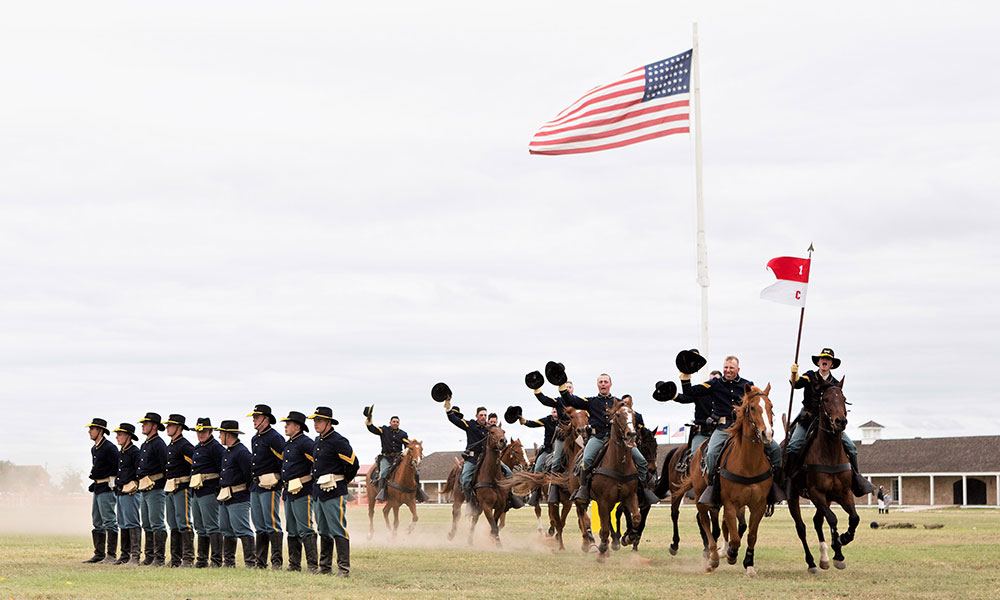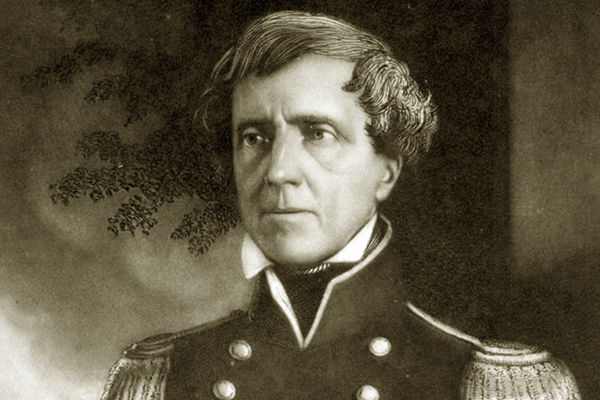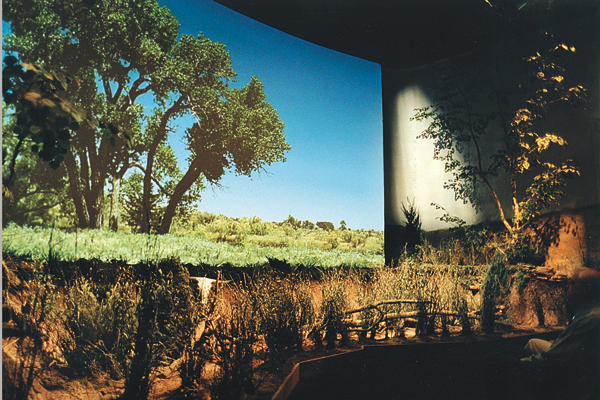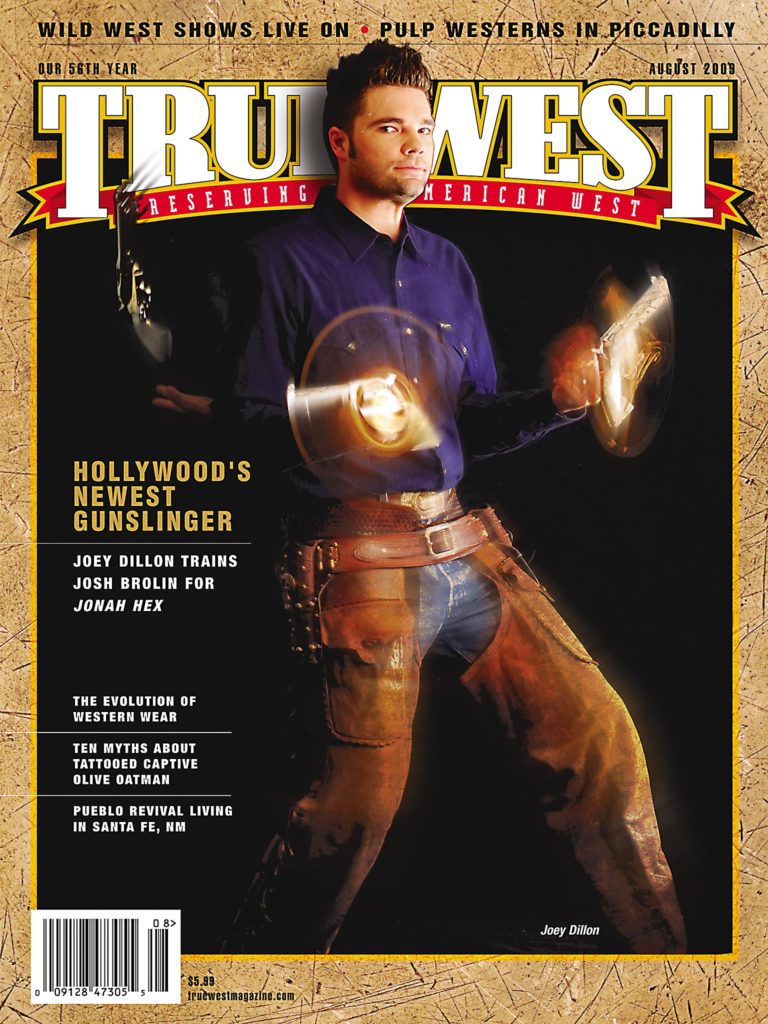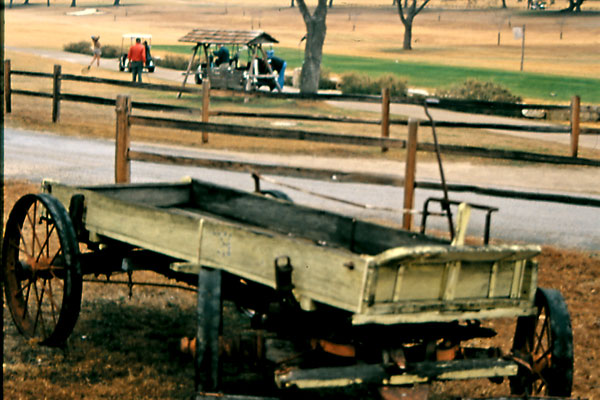
I’ve lost count of the museums dedicated to preserving the history and legacy of the Chisholm Trail.
I can’t remember all the novels I’ve read about the Chisholm Trail. There are songs about the Chisholm Trail. Books about the Chisholm Trail. Road markers lauding the Chisholm Trail. It’s Chisholm Trail this, and Chisholm Trail that.
You ask me, it’s a conspiracy, and I’m not putting up with this oversight anymore. I’m heading north from South Texas to honor the legacy of that other great cattle trail, the Western Trail.
Some historians tell us that the Great Western Cattle Trail was blazed in 1874 by John T. Lytle, who drove a large herd of longhorns from South Texas to the Red Cloud Indian Agency in Nebraska. Which brings up another point. Lytle was a cattle drover. Jesse Chisholm, namesake of that other cattle trail, never pushed a herd of little dogies. NO RESPECT!
When farmers started to clutter up that aforementioned Chisholm Trail, and the Kansas cattle towns began moving farther west, the Western Trail—a.k.a. the Dodge City Trail, a.k.a. the Fort Griffin Trail—grew up to be king of cattle trails.
Of course, it’s hard to figure out where any cattle trail really began. Trails depended on good grass and good water, which could change as often as the Texas weather. Feeder trails sent cattle from as far south as Brownsville, and through or from other fine burgs like Boerne (Fritze’s BBQ), Castroville (Castroville Cafe) and San Antonio (Alamo Cafe), all of which can fill you up with their history, charm and food. But I’ve found no better place to start any cowboy adventure in Texas than in the “Cowboy Capital of the World.”
Hey, Dude
Welcome to Bandera, home of the Frontier Times Museum, which J. Marvin Hunter founded in 1933 to preserve that rich Western history. (Yes, the same Frontier Times that this magazine’s founder Joe Small bought as a sister publication to True West.) Housing some 40,000 pieces of artifacts—prehistoric to pioneer—the museum is a great way to kick off a cattle drive journey.
An even better way is to head ’em up and move ’em out at a guest ranch, and remember: They’re not just for dudes anymore. Bandera has plenty to choose from: the Dixie Dude Ranch (the dean of Bandera’s dudes since 1937), the Flying L Guest Ranch (complete with an 18-hole golf course), the Running-R Guest Ranch (a horse lover’s heaven), the Twin Elm Guest Ranch (with its own summer rodeo), the Mayan Ranch (Miss Judy’s cooking’s to die for) and many more.
Just up the pike is another great Hill Country town, and historians and cattle trail buffs can make a strong argument that the Western Trail began here, in Kerrville. No argument from me, because it’s a good excuse to visit that grand home of the Cowboy Artists of America—the Museum of Western Art—one of the West’s great art collections and teaching institutions, with a side trip to the bar at the Y.O. Ranch Resort Hotel & Conference Center—one of the West’s best waterin’ holes.
From Kerrville, the Western Trail moved north through some prime Lone Star real estate, across the James River near Noxville, and then on toward Brady. Stop at Menard to check out the ruins of the Presidio de San Luis de las Amarillas or skirt over to Fort McKavett to visit what William T. Sherman called the prettiest post in Texas.
Real Cow Country
It’s hard to leave the Texas Hill Country, and Abilene really isn’t on the Western Trail, but it’s a good place to hang your hat. Besides, it’s even more (real) cowboy than Bandera, and Western buffs can get their Old West fill at nearby Buffalo Gap Historic Village. Meanwhile, in downtown Abilene, the Frontier Texas museum brings the Texas frontier to life with a lot of high technology for an old cattle town. (Pssst … Gun buffs are sure to enjoy the exhibit “The Guns that Won the West,” which runs through December.)
From Abilene, truck on over to Albany and Fort Griffin. Albany’s another town that refuses to forget its history. Each June, it plays host to the “Fort Griffin Fandangle,” a piece of Americana and theatrical history that honors cowboys and longhorns, and is performed in an outdoor amphitheater.
The Fort Griffin State Historical Park might not be the best preserved fort, but it happens to be the home of the Official State of Texas Longhorn Herd, and we’re following a cattle trail, so you must stop here. “Without the longhorn,” Mary Ann McCuistion says, “there wouldn’t have been a [Western] trail.”
More about Mary Ann later, because she’s a major player intent on giving the Western Trail its due.
But first, we need to get through Throckmorton (the “Capital of Cow Country,” not to be confused with Bandera’s Cowboy Capital claim) and Seymour (Tom Lea completed the mural at the post office in 1942) and on across the Pease River at Vernon.
Ambition in Vernon
Vernon isn’t going to let the Western Trail fall off the map. The Red River Valley Museum plans to add an $8.1-million, 30,000-square-foot Western Trail Heritage Center. That’s an ambitious project for a town of 12,000, and that’s where Mary Ann McCuistion comes in.
Director of the Red River Valley Museum, McCuistion is as fed up with this Chisholm Trail love affair/anti-Western Trail bias as I am. “We want kids to know that their hamburger comes from someplace other than a fast
food place,” McCuistion says. “The center will tell the story of the trail from Mexico to Canada.”
The story of the cattle industry will be kid-friendly, and the center will include a research library. The museum has already started an oral history project, not to mention marking the Western Trail across Texas. About 15 percent of the needed funds to complete the heritage center has been raised.
The Chisholm Trail has a heritage center—a great one, in Duncan, Oklahoma—but the Western Trail deserves one too.
Vernon’s the perfect spot for such a museum. “We’re the halfway spot from San Antonio to Dodge City,” McCuistion says. Not only that, but just up the road is my favorite spot on the Western Trail: Doans, home of Doan’s Store, the last place for supplies before crossing the Red River into Indian Territory.
Seven million cattle and horses (give or take a few) crossed the Red River here between 1876 and 1893, but I’ll find an easier spot on U.S. 183 on my way to Clinton.
Oklahoma and Kansas
Here’s an obstacle Vernon’s Western Trail Heritage Center might face. Clinton once was home of the Western Trail Museum. Today, it’s home instead to the Oklahoma Route 66 Museum. Seems that tourists just weren’t stampeding to see a Western Trail museum, so the brass decided to honor another “mother road.” Maybe if I could just persuade that great road storyteller, Michael Wallis, to write a book about the Western Trail, all would be saved.
Michael has written about Route 66, the Lincoln Highway, the 101 Ranch, Billy the Kid and Pretty Boy Floyd. A Western Trail history would be natural. Mike, you can save this trail! Make a pitch! No publisher can say “no!” to the Sheriff from the Pixar movie Cars.
Well, no matter. The Oklahoma Route 66 Museum is still a good place to get your kicks before lighting out for Fort Supply to visit Fort Supply Historic Site, run by the Oklahoma Historical Society (check out Cavalry Day on September 19). Then push on north to Dodge City, Kansas.
You know Dodge, of course. It’s the Queen of the Cowtowns, Kansas’s version of Sin City. Home of Wyatt Earp and Gunsmoke’s Miss Kitty. It’s a town that still smells like a cowtown, and if you can make it to the Boot Hill Museum without getting smashed by a big-rig truck, you deserve a cold one at the Long Branch Saloon.
Actually, Dodge City is charming and a lot of fun. It’s cultural (Depot Theater Company). It’s cowboy (Dodge City Roundup Rodeo). It’s historic (Mueller-Schmidt Home of Stone). And it’s kitsch (Gunfighters Wax Museum). It’s even bridle bits (Bridle Bit Museum … that’s right, a collection of historic bridle bits, open by appointment).
I always hate to get the hell out of Dodge.
Trail to Ogallala
Yet I must make my way to another great cowtown on the Western Trail; Ogallala also doesn’t get enough respect.
The Gateway of the Northern Plains was cowtown king from the 1870s until the mid-1880s. In fiction, Gus and Call came through Ogallala in Lonesome Dove. In nonfiction, it was home to Tuck’s Saloon and other fine watering holes. “From amongst its half hundred buildings, no church spire pointed upward,” Andy Adams wrote in 1903’s Log of a Cowboy, “but instead, three fourths of its business houses were dance halls, gambling houses, and saloons.”
The cowtown’s Boot Hill isn’t quite the “Gomorrah of the cattle trail” today, like Adams called it, but it is definitely a hill, and it is as fine a historic boneyard as you are apt to find in western Nebraska.
End of Trail
An outbreak of Texas fever in the summer of 1884 led Nebraska to ban the entrance of Texas cattle during the warm months, which pretty much ended Ogallala’s glory days. It pretty much ended the Western Trail’s heyday too. Oh, there was a movement to create a National Cattle Trail, but those proposals never made it out of Washington, D.C.
The Western Trail didn’t end in Ogallala. Some drovers went on into the Dakotas to Deadwood, Medora or Fort Buford. Others moved a little west and traveled to Miles City, Montana. Some trod all the way to Canada.
The story goes that in 1893 John R. Blocker took a herd to Deadwood, South Dakota, the last cattle drive on the Western Trail.
The Western Trail was longer than the Chisholm. It was prettier than the Chisholm. It likely was wilder than the Chisholm. It just doesn’t get—heavy sigh—the respect of the Chisholm Trail.


